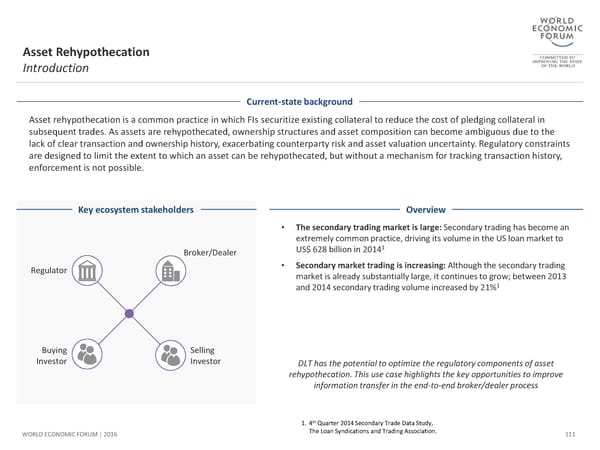Asset Rehypothecation Introduction Current-state background Asset rehypothecation is a common practice in which FIs securitize existing collateral to reduce the cost of pledging collateral in subsequent trades. As assets are rehypothecated, ownership structures and asset composition can become ambiguous due to the lack of clear transaction and ownership history, exacerbating counterparty risk and asset valuation uncertainty. Regulatory constraints are designed to limit the extent to which an asset can be rehypothecated, but without a mechanism for tracking transaction history, enforcement is not possible. Key ecosystem stakeholders Overview • The secondary trading market is large: Secondary trading has become an extremely common practice, driving its volume in the US loan market to Broker/Dealer US$ 628 billion in 20141 Regulator • Secondary market trading is increasing: Although the secondary trading market is already substantially large, it continues to grow; between 2013 and 2014 secondary trading volume increased by 21%1 Buying Selling Investor Investor DLT has the potential to optimize the regulatory components of asset rehypothecation.This use case highlights the key opportunities to improve information transfer in the end-to-end broker/dealer process 1. 4th Quarter 2014 Secondary Trade Data Study, WORLD ECONOMIC FORUM | 2016 The Loan Syndications and Trading Association. 111
 The Future of Financial Infrastructure Page 110 Page 112
The Future of Financial Infrastructure Page 110 Page 112